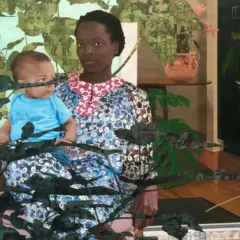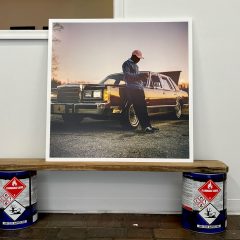Nobody deals with social issues of gender, race and politics quite as well as Kalup Linzy. The video and performance artist is having his first solo museum show at the Studio Museum and it’s a marvel. The prolific Linzy, who was born in Florida but lives in Brooklyn, has about 3-hours worth of videos looping in a room at the museum. There’s some seating (although not nearly enough given the length of the program).
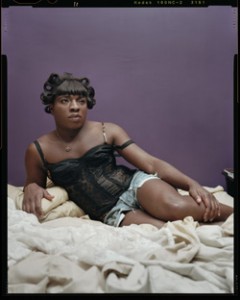
Steve, Cate and I were lucky enough to get little soft cubes to sit on but several others stood for a long time watching the music videos, soap operas and black and white vignette, Keys to Our Heart. We saw an hour of the work and I’d go back for more. Linzy’s work gives you a lot–it’s by turns funny, appalling, ridiculous, heart-warming, transgressive– and always full of questions about social mores and entrenched attitudes. And while the cross-dressing Linzy vamps wildly through many roles and you might think, well, that’s not for everyone, he manages to connect with a wide range of audience members.
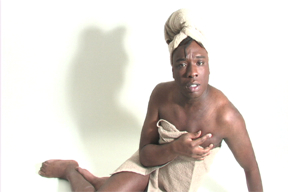
While we were there, a group of cross dressing young men watched and quietly tittered at the funny and outrageous stuff (a rendition of the song Lollypop, for example, dripping with inuendo about body parts). And a group of older African American adults, men and women, who were there together, hooted back at the screen, enjoying what they saw immensely for all its transgressions. They hollered most during Keys to Our Heart (2008) a New Orleans piece (it was part of Prospect 1) in which Lily (Linzy) manipulates Dinah, Sally Sue and John Jay into and out of relationships in order to get what she wants. The visuals for this are great. Mostly the piece is set inside with Lily in a kimono and drinking tea or booze–very Streetcar Named Desire-like. Dinah and Sally Sue wear gloves with their 40’s-era dresses and there’s a few outside shots that evoke New Orleans courtyards and shotguns. It’s a spectacular piece about trust, deceit, friendship and more.
There are double entendres and mixed meanings running throughout the works. In one episode of All Da Churen, a character gets hysterical over the loss of her Jo Jo, killed in a drive-by shooting. I won’t tell you who Jo Jo is but it may not be who you’re thinking.
You can see clips from many works on Linzy’s comprehensive and user-friendly website (he’s got a blog and welcomes comments, although there weren’t any that I saw, but then, it’s a new blog). There’s apparently a documentary in the works, and some clips from that on the website.
Linzy writes some of the music he performs, and that, too — in this age of cyber-friendliness– is available to listen to/download at the museum’s website or on the artist’s MySpace page.
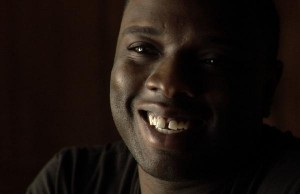
I am puzzling over why Linzy didn’t make the cut for the New Museum’s Younger Than Jesus show. He’s in the Artist’s Directory as one of the 500 artists considered for the show. It’s a mystery.
Like Ryan Trecartin, who is in the New Museum exhibit, Linzy uses an ensemble cast (he usually makes up most of the ensemble, playing, for example, mom, grandmom, sisters and brothers in one family, in All Da Churen). Both artists’ works have a hermetically-sealed hothouse quality: They shoot in the real world of paint-peeling apartments and evoke references to real world things like soap operas, Hollywood movies, MTV videos. They even deal with real world subjects–Trecartin circles around sex, violence, internet slipperiness, pregnancy and power again and again; Linzy focuses on sex, love, power, families and gender over and over. Emotional sensationalism you could call it, with everything ratcheted up out of the real and into a kind of dreamy surrealism that’s just off enough to snap your head around. Trecartin is loud and scary–his work is riding the contemporary Id. Linzy’s work is softer and more sly. It doesn’t hector with its points about love and longing being universal but slips them in unobtrusively in works that seem almost like real true tv fare.
I didn’t realize until I saw Linzy’s website that he does live performance as well. Apparently he just did an evening at MoMA earlier this month in which he was in character wearing a wig and a black, long-sleeved Danskin leotard. Somebody please bring this guy to Philly for a performance.



